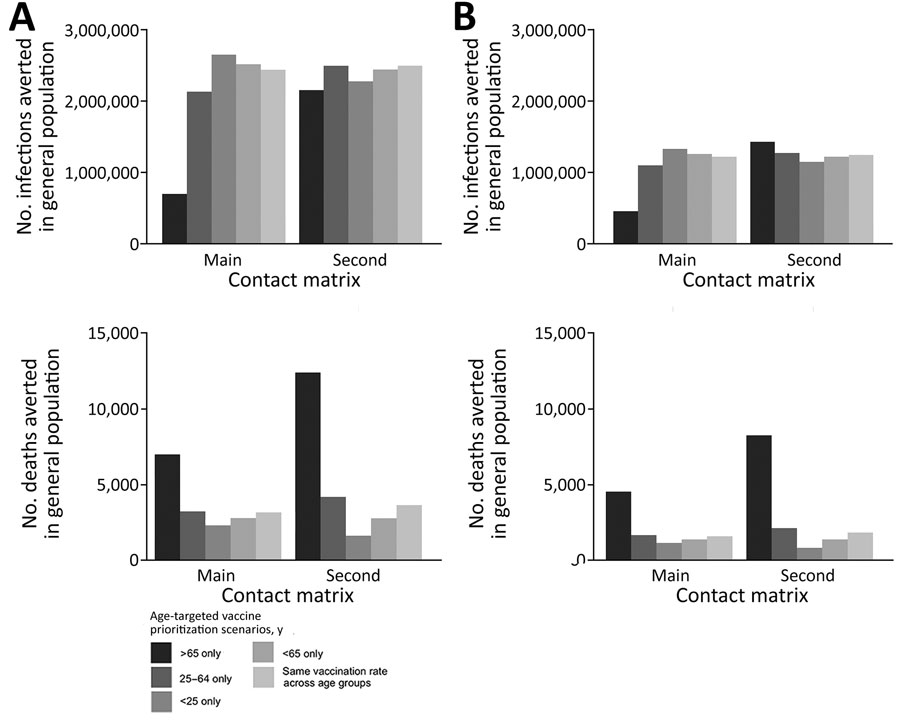Volume 29, Number 2—February 2023
Research
Age-Stratified Model to Assess Health Outcomes of COVID-19 Vaccination Strategies, Ghana
Figure 2

Figure 2. Effects of various vaccination scenarios on the number of cumulative infections averted (upper panels) and the number of deaths averted (lower panels) in the general population, Ghana. The assessment used 2 different contact matrices in the main analysis and an effective reproductive number of 3.13 for the initial strain. A) Results assuming 1 million persons were vaccinated in 3 months. B) Results assuming 1 million persons were vaccinated in 6 months.
Page created: December 06, 2022
Page updated: January 21, 2023
Page reviewed: January 21, 2023
The conclusions, findings, and opinions expressed by authors contributing to this journal do not necessarily reflect the official position of the U.S. Department of Health and Human Services, the Public Health Service, the Centers for Disease Control and Prevention, or the authors' affiliated institutions. Use of trade names is for identification only and does not imply endorsement by any of the groups named above.